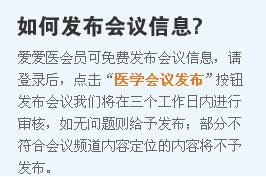
加利福尼亚洲蒙特利(EGMN)——以色列希伯来大学医学中心的Carolyn F. Weiniger博士在产科麻醉与围产医学会(SOAP)年会上报告,筛查性问卷调查结果显示,有针对性地改用不含乳胶的医疗产品,可以大大降低剖宫产女性发生乳胶过敏反应的风险,但唯一能彻底消除这一风险的手段是采取无乳胶策略。
研究者发现,接受剖宫产的女性中2%发生了乳胶过敏反应,与使用乳胶制品和未做专门筛查有关。在该中心对选择患者进行问卷筛查以评估乳胶敏感性,并使用无乳胶手套和导尿管之后,乳胶过敏反应发病率降低至0.6%,降低了超过2/3。而在该中心对所有剖宫产女性实施无乳胶策略之后,发病率进一步降至0%。
这项研究涉及连续40个月内在该中心实施的1,569次分娩,研究者分析了剖宫产患者的乳胶过敏反应发病率。这40个月包含4个时期:1.基线期(n=460),遵循常规程序,使用乳胶产品且不进行专门筛查;2.第二期(n=302),对剖宫产采取无乳胶策略;3.第三期(n=281),应成本过高而停止实施无乳胶策略;4.第四期(n=526),采用问卷筛查,有针对性地实施干预。问卷内容包含皮肤点刺试验结果和(或)血清乳胶IgE抗体检测结果,既往研究证实这些指标对乳胶过敏有很高的敏感性和特异性。
研究结果表明,基线期的乳胶过敏反应(可能、很可能或明确)发病率为2%,第二期为0%(与基线期相比P=0.003),第四期为0.6%(与基线期相比P=0.015)。总体而言,根据问卷调查结果,第四期有15%的女性可疑为乳胶过敏。
根据经济学分析,如果剖宫产女性发生乳胶过敏反应的几率低于2%,则采取问卷筛查更具有成本效益,而当几率高于2%时采取无乳胶策略更佳。“这种经济学分析是敏感性分析,因此它可以被广泛用于重症监护病房的成本分析。”
梅奥医院的Katherine W. Arendt博士认为这项研究具有很高的借鉴价值,“我们可以回顾一下自己医院的乳胶过敏反应发病率是否达到2%,然后判断该采取哪种措施”。她还询问作者,采取无乳胶策略的障碍有哪些?Weiniger博士答复称:“主要问题在于,当我们开始这项研究时,无乳胶手套价格超出普通乳胶手套的5倍。”此外,他强调鉴于乳胶过敏反应的表现可能非常微妙,所以必须保持高度警惕。例如,如果患者在手术中突发意外的低血压,而且没有出血之类的明显病因,就应当进一步检查分析。
但努力未必能得到好结果。Weiniger 博士举例称:“尽管我们知道所有剖宫产都应该使用无乳胶手套,但曾有1例患者被匆匆送入手术室而我们没来得及告知术者这一策略,于是在行紧急剖宫产时使用了普通乳胶手套,然后她发生了乳胶过敏反应。所以我们开展了一个教育项目,以确保每个人都了解有关策略。”
尽管研究者多次口头或书面提醒发生过敏反应的女性到该中心的过敏科接受评估,但只有44%的女性遵循了这一建议。所有发生过敏反应的女性均为皮肤点刺试验阳性。
Weiniger博士报告称无相关利益冲突。
BY SUSAN LONDON
Elsevier Global Medical News
Breaking News
MONTEREY, CALIFORNIA (EGMN) – A screening questionnaire with targeted replacement of latex-containing medical products dramatically reduces the risk of latex anaphylaxis among women undergoing cesarean delivery, but a latex-free policy appears to be the only surefire way to eliminate this risk entirely, according to one institution's experience.
Investigators at the tertiary-care Hadassah Hebrew University Medical Center, Ein Kerem campus, Jerusalem, found that 2% of women undergoing cesarean delivery experienced latex anaphylaxis with the center's usual procedures, involving use of latex products and no special screening.
The incidence was more than two-thirds lower, 0.6%, when the center implemented a screening questionnaire in elective cases to assess latex sensitivity and used latex-free gloves and urinary catheters in women who screened as potentially sensitive, Dr. Carolyn F. Weiniger reported at the annual meeting of the Society for Obstetric Anesthesia and Perinatology. However, it was even lower, 0%, when the center implemented a latex-free policy for all women undergoing cesareans.
An economic **ysis favored use of the questionnaire when the probability of latex anaphylaxis during cesarean was less than 2% and use of the latex-free policy when the probability was greater than that. “The economic **ysis was a sensitivity **ysis, so it could be used outside of our setting for a wide range of ICU costs. You just need to decide what your ICU costs are,” Dr. Weiniger commented in a poster discussion session.
“I think this [study] is very applicable to our practices. … You can look at your practice and decide if your rate of latex anaphylaxis is greater than or equal to 2%,” said session comoderator Dr. Katherine W. Arendt of the Mayo Clinic, Rochester, Minn. She asked the authors what the perceived barriers were to making delivery rooms latex free.
“The main problem is that latex-free gloves, when we started the study, were five times more expensive than regular latex gloves,” Dr. Weiniger replied.
Additionally, r**ding a bit, centers must be aware that a problem even exists. “Have a high index of suspicion for latex anaphylaxis because the signs are very subtle. If you have a case of hypotension unexpectedly during surgery that doesn't have an obvious cause, like bleeding,” look into it further, she recommended in an interview.
Centers that do identify a problem should crunch their numbers. “You can use our sensitivity cost **ysis, where you just plot your own cost of gloves and cost of an ICU bed, and work out whether you are above or below a cost-benefit position, whereby it would be cheaper for your institution to switch to latex-free gloves as opposed to using latex gloves,” she elaborated. Those numbers can then be taken to management to make the case for a change in policy.
But the effort does not necessarily end there, according to Dr. Weiniger. “We knew that all cesarean sections should be done with latex-free gloves, but one patient was rushed to the main OR, and the message hadn't gotten through, and she had latex anaphylaxis during emergency cesarean section when regular gloves were used. So we had to institute an educational program as well to make sure everybody knew about the policy,” she said.
In the study of 1,569 parturients, the investigators **yzed the incidence of latex anaphylaxis among those undergoing elective cesarean delivery during four consecutive periods spanning 40 months.
In the baseline period (n = 460 women), the center followed usual procedures, with use of latex products and no special screening. In the second period (n = 302), it implemented a latex-free policy for cesareans. In the third period (n = 281), it discontinued the latex-free policy because of costs. And in the fourth period (n = 526), it implemented the screening questionnaire with targeted intervention as an alternative approach; the questionnaire contained items validated in previous studies with skin prick test results and/or serum latex IgE antibodies to have high sensitivity and specificity for detection of latex allergy.
Study results showed that the incidence of latex anaphylaxis (possible, probable, or definite) was 2% in the first period, 0% in the second period (P = .003 vs. first), and 0.6% in the fourth period (P = .015 vs. first), Dr. Weiniger reported.
In all, 15% of women completing a questionnaire during the period when it was used had suspected latex sensitivity on the basis of the results.
Women experiencing anaphylaxis received many verbal and written reminders to be evaluated at the center's allergy clinic, but just 44% did so. All were found to be positive for latex allergy on skin prick testing.
The financial **ysis took into account a variety of costs. “When we were looking at ICU costs, we were looking at the costs per treating a case of anaphylaxis, so that could range from very minor to major costs, including lawsuits if there was a fatality,” Dr. Weiniger explained. Other costs included those of using latex-free gloves, at $1 per pair and five pair needed per cesarean case.
“The management, when they understood that a cesarean section anaphylaxis could cost them a minimum of $500 per case, and the latex gloves [would cost] $5 per case, they just did the math, with a 2% incidence of latex anaphylaxis in our hospital. They agreed [on a latex-free policy] only for cesarean sections, not for other surgeries, and not for urinary catheters,” as the literature suggests that gloves are the main source of the problem.
Many institutions have not assessed anaphylaxis in their cesarean populations, according to Dr. Weiniger. “So we are planning a national study to get other institutions to identify any case of potential anaphylaxis, to do mast cell tryptase to confirm if it was anaphylaxis, and to do latex testing to see if the cause was latex, so the other institutions can identify if they also have a problem,” she said.
Dr. Weiniger disclosed no financial conflicts of interests.

